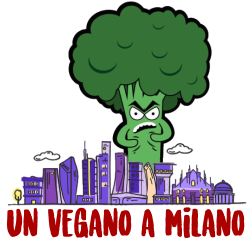Superfood Occasioni
I nuovi iscritti alla nostra e-newsletter ricevono sempre un omaggio. Prendi il tuo qui: https://nutritionfacts.org/subscribe/
DESCRIZIONE: Classifica degli alimenti in base agli antiossidanti per dollaro speso. Hai una domanda su questo video? Lascialo nella sezione commenti su http://nutritionfacts.org/videos/superfood-bargains-2/ e cercherò di rispondere esso! Non esitare a pubblicare qualsiasi domanda di tipo chieda al dottore qui nella sezione commenti e sarei felice di provare a rispondere. E guarda gli altri video sugli antiossidanti (http://nutritionfacts.org/topics/antioxidants/). Inoltre, ci sono 1,449 altri soggetti (http://nutritionfacts .org/topics/) trattato nel resto dei miei video: sentiti libero di esplorarli anche tu!
Inoltre, controlla i post del mio blog associati http://nutritionfacts.org/blog/2012/01/17/amla-indian-uva spina-contro-cancro-diabete-e-colesterolo/
https://NutritionFacts.org
• Iscriviti: https://nutritionfacts.org/subscribe
• Dona: https://nutritionfacts.org/donate
• Podcast : https://nutritionfacts.org/audio
• Facebook: www.facebook.com/ NutritionFacts.org • Twitter: www.twitter.com/nutrition_facts
• Instagram: www.instagram.com/nutrition_facts_org
• Libri: https://nutrition fact.org/books
• Negozio: https:/ /drgreger.org

@mittcleaver Yes, thank you so much for your comment. It is very difficult and frustrating for people with lower incomes, often even to just access fresh food. But you're very right about cabbage being inexpensive! Here's to spreading the word about the benefits! 🙂
Cinnamon apple pecan pie (with a dash of cloves) FTW!
That is a very good way of explaining it and defeats the argument about healthy food being expensive.
why in another video cloves are higher than cinnamon?
is purple cabbage really better than cloebs?
Are cloves toxic in large quantites?
how many cloves per day is safe?
I think I need to get some purple cabbage. I really the fact that it changes color according to PH. I want to try the urine PH test. But I didn't realize how nutritious it is. So I will to get some to put in my pee and in my mouth. 🙂
I dont understand why amla and acai are never mentioned together for a same grouping. Haritaki has even more ORAC value than amla.
Doesn't your own body produce antioxidants. Is this production not down regulated with the addition of exogenous antioxidants. Just wondering.
I'm going to pick/collect all the pecans I can this year. The best price is an hour for all you can manage to take away.
red cabbage into veg/fruit smoothie.
What the fuck is askari?
is red cabbage sauerkraut like a health bomb? I'm interested in the benefit of fermented foods. I will have a hard time saying no to yogurts and kefir 😥
Kale is better and I refuse to believe that it is much more expensive.
Do we have to sprinkle mustard powder on purple cabbagge for the sulforaphane or thats just for broccoli?
This is one of my favourite videos, I'd love it if you could update it. I'm guessing your knowledge of antioxidant content per dollar would share newer info. Keep up the good work though.
If apples contain a lot of anti-oxidants, why do they go brown when cut?,
Wait 'till Oct 2017 then you will say Amla powder is the highest antioxident. CMJ
Thank you. I'm going to start incorporating purple cabbage into my diet, should add a delectable crunch.
Please write the names on the description, hard to understand some names you mention in your videos!
I think a new video is needed to update this? Indian gooseberry is so cheap and so super high in antioxidant! Thanks Dr Greger and team for bring us such useful information to help us take back nownership and power for our health.
❤️❤️❤️ GO VEGAN ❤️❤️❤️
Love practical vids like this!
best way to consume cloves?
There is very little evidence to suggest that plant antioxidants do anything health promoting in the human body other than to exert a mild hormetic effect. Generally speaking, not much of them are taken up into the bloodstream during digestion, and whatever small amounts do make it into the circulation are rapidly cleared from the blood in the same manner that mild organic toxins are cleared from the blood. It's sad to see people structuring their whole way of eating around the ORAC scale, and moreover earnest doctors and scientists promoting this way of thinking, on the basis of the sophomoric assumption that because these compounds convey beneficial antioxidant action on cells in a petri dish, they will do same in the human body when eaten. If they're providing any benefit beyond hormesis, the only places they would be doing so is in the cooking process where they might help prevent the formation of certain harmful compounds that arise from heat oxidation (irrelevant in the case of raw fruits and vegetables, salads, smoothies, etc), or in the gut where they might bestow some yet unknown benefit to the microbiota over and above the various fermentable carbohydrates they accompany.
These "phyto-nutrient" [sic] compounds are produced by plants to serve specific evolved functions unique to their plant biology like pigmentation for UV resistance, or resistance to infections or predation—functions completely unrelated to human biology, which is why the human body recognizes them as mild toxins to be cleared from the blood as quickly as possible, as distinct from the actual nutrients we get from eating these plants such as vitamins, minerals, and macronutrients, which are actively absorbed, metabolized and transported throughout our organs and tissues because they are chemically relevant enough to actually serve a purpose in human biology. Until some benefit from consuming them is actually proven and its biological and chemical mechanisms are elucidated, "phytonutrient" should be regarded as a misnomer, because these compounds have simply not shown fit the definition of "nutrient" in the context of human nutrition.